Nuclear Architecture and Chromatin
Nuclear Architecture and Chromatin
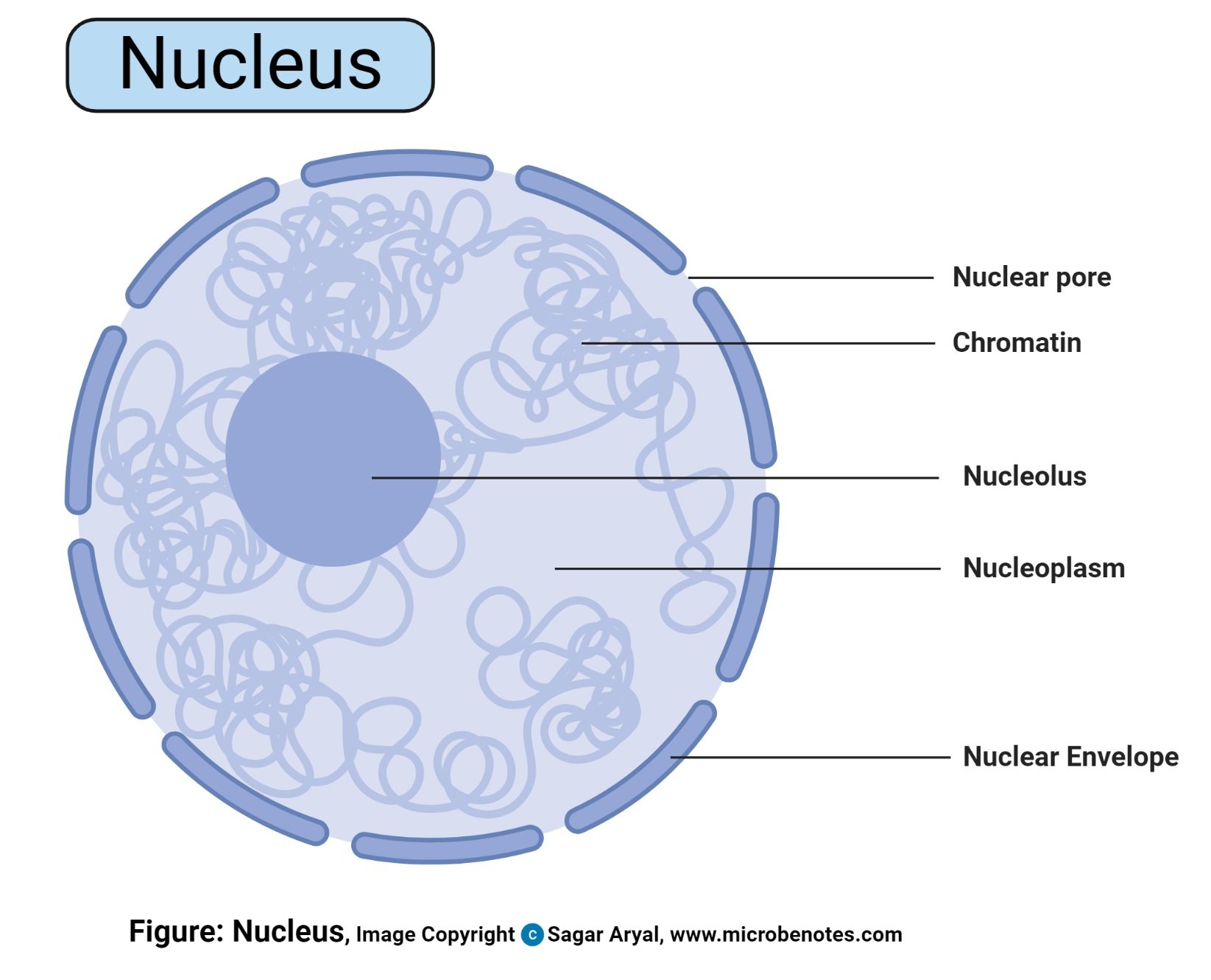
Definition of the Components of the Nucleus
Nuclear Envelope and Traffic between the Nucleus and the Cytoplasm
The nucleus is the distinguishing feature of eukaryotic cells when compared to prokaryotic cells. It houses the genome, functioning as the repository of genetic information and the cell's control center. Separation of the genome from the site of mRNA translation is central to eukaryotic gene expression. The nuclear envelope plays a crucial role in this separation, controlling the traffic of proteins and RNAs through nuclear pore complexes and regulating gene expression.
Components of the Nuclear Envelope
- Nuclear Membranes: Two phospholipid bilayers permeable only to small nonpolar molecules. The outer membrane is continuous with the endoplasmic reticulum (ER), and the space between the inner and outer membranes is directly connected with the lumen of the ER.
- Nuclear Lamina: A fibrous mesh that provides structural support consisting of fibrous proteins called lamins and other associated proteins.
- Nuclear Pore Complexes: Large structures composed of about 30 different proteins (nucleoporins) facilitating selective transport and passive diffusion between the nucleus and cytoplasm.
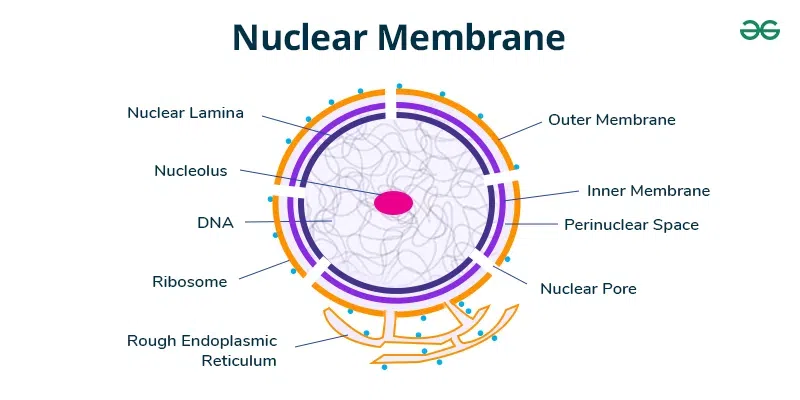
Lamins and the Nuclear Lamina
Lamins are intermediate filament proteins that interact to form dimers. These dimers wind around each other forming coiled coils and associate side-by-side to support the lamina. Lamins bind to inner nuclear membrane proteins such as emerin and lamin B receptor (LBR), connect to the cytoskeleton via LINC complexes, and bind to chromatin.
[h4]Nuclear Pore Complexes and Nuclear TransportMolecules pass through this complex via: 1. Passive Diffusion: Freely in either direction for small molecules. 2. Selective Transport: Requirement for energy to carefully transport proteins and RNAs, regulating their activities and controlling gene expression.
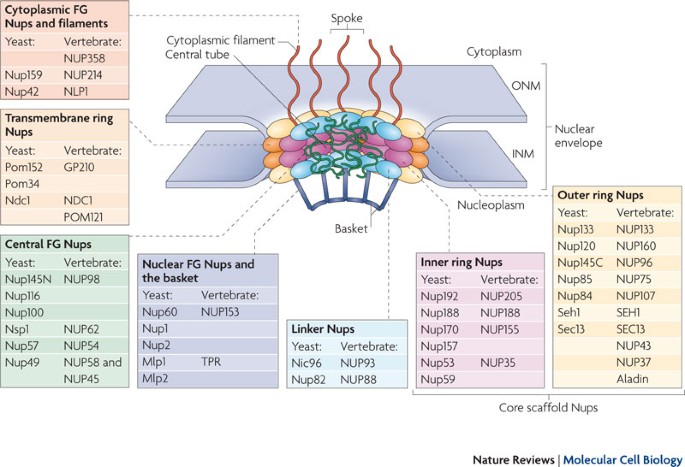
Nuclear Localization Signals and Transport Receptors
Proteins requiring entry to the nucleus have nuclear localization signals (NLS) recognized by importins. Importins work with Ran, a GTP-binding protein that controls directionality, forming a complex transported across the membrane. In the cytoplasm, Ran GAP hydrolyzes GTP on Ran to GDP, releasing importin, where Ran/GDP returns through its import receptor regenerating Ran/GTP in the nucleus.
Example: Regulation of Protein TransportControl of protein activity in the nucleus is a mechanism of regulating transcription factors and gene expression.
Organization of Chromosomes and Chromatin
During interphase, chromatin is decondensed and active, while during mitosis, it becomes compact to form metaphase chromosomes. Even in interphase, chromosomal regions correlate transcriptional activity with spatial organization within the nucleus.
[h4]Chromosome Territories and Transcription FactoriesChromosome conformation capture technology reveals interactions between chromosomal regions, showing that clusters within the nucleus (transcription factories) often contain coregulated genes transcribed together.
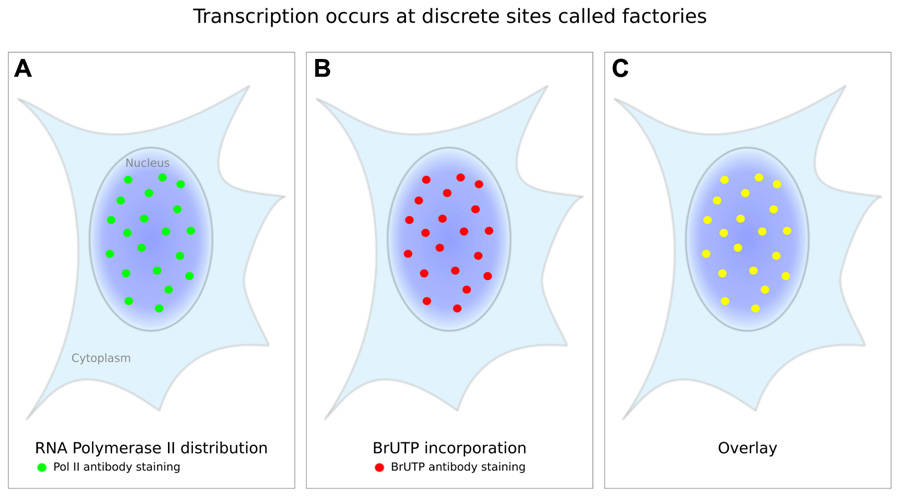
Ribosome Production in the Nucleolus
Ribosomes are essential for protein synthesis, where rRNA synthesis and ribosome production occur in the nucleolus. The 45S ribosomal RNA is processed into 18S, 5.8S, and 28S rRNAs, forming ribosomal subunits exported to the cytoplasm.
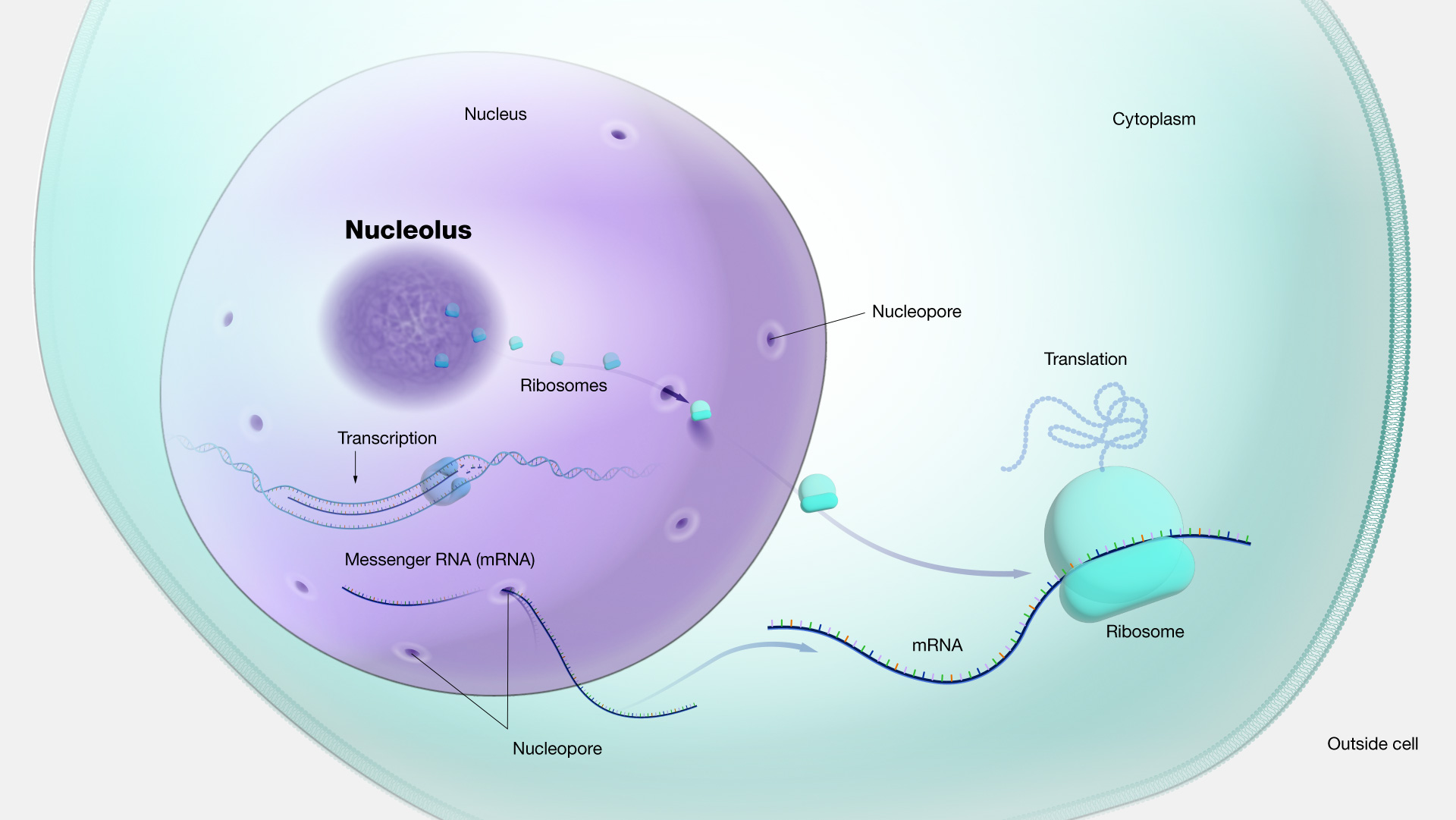
Chromosomal Elements: Centromeres and Telomeres
- Centromeres: Specialized regions ensuring correct distribution of duplicated chromosomes during mitosis, attaching kinetochore microtubules.
- Telomeres: Repeated sequences at chromosome ends required for the replication of linear DNA. They bind shelterin proteins protecting chromosome termini, with telomerase replicating these sequences, influencing cellular lifespan and cancer research.
